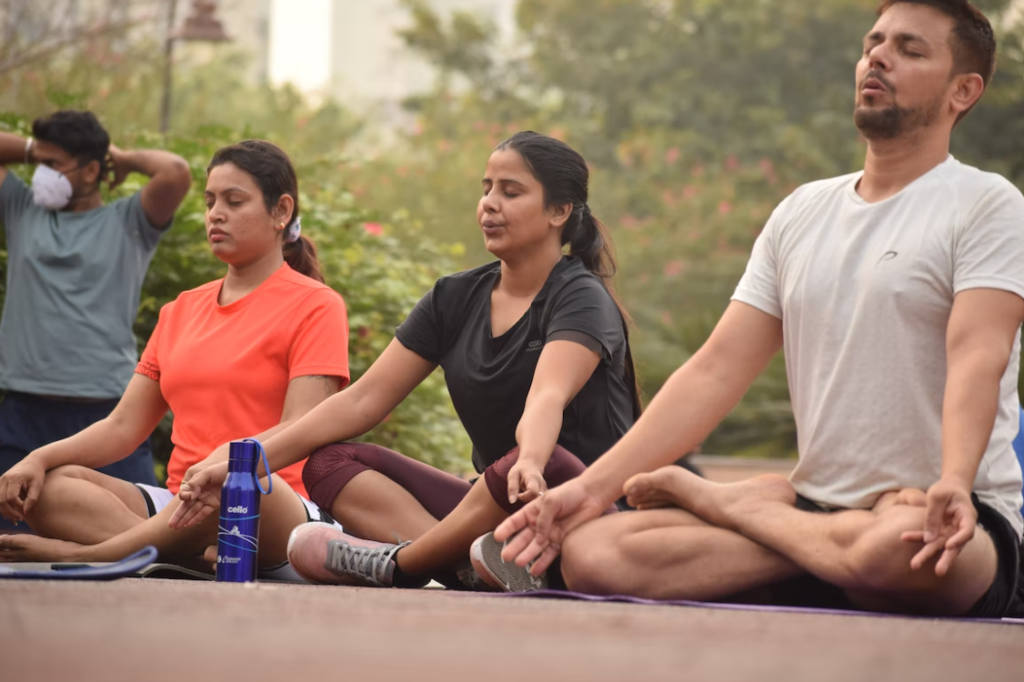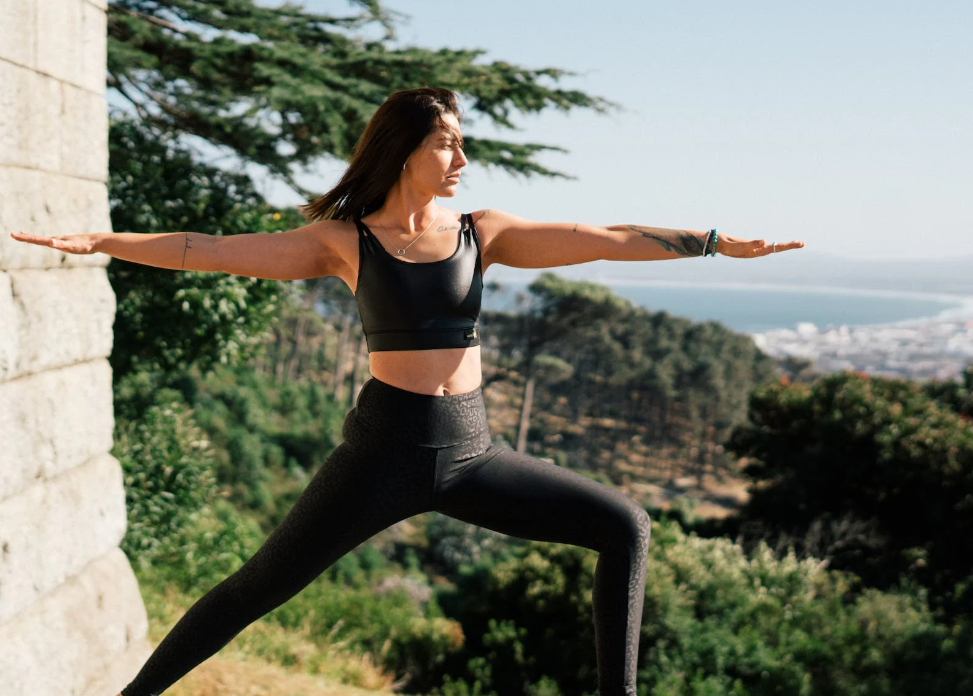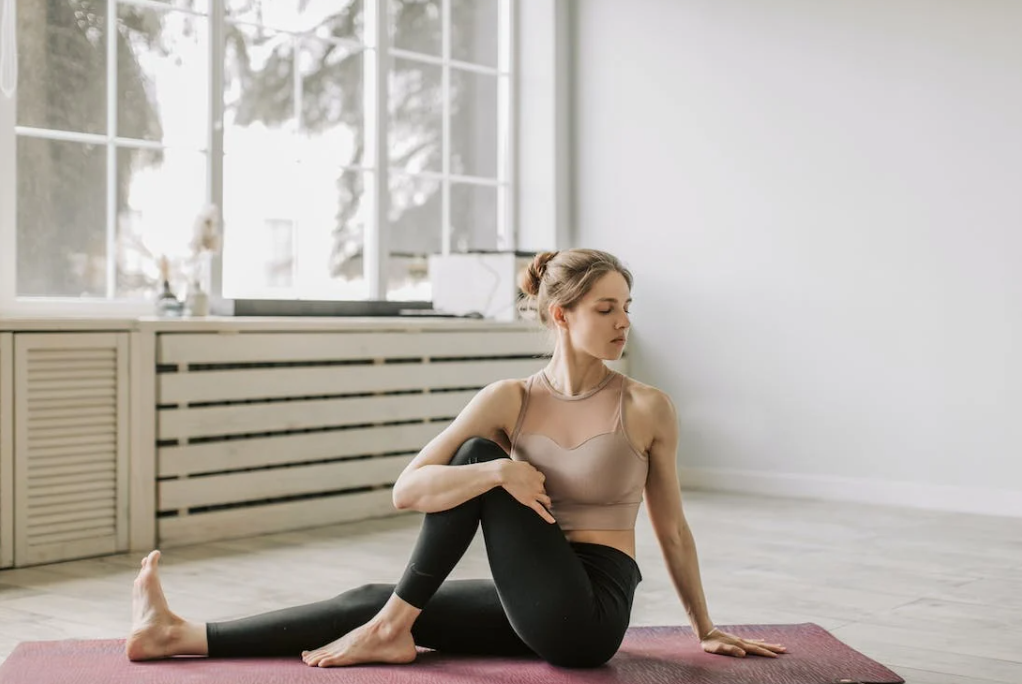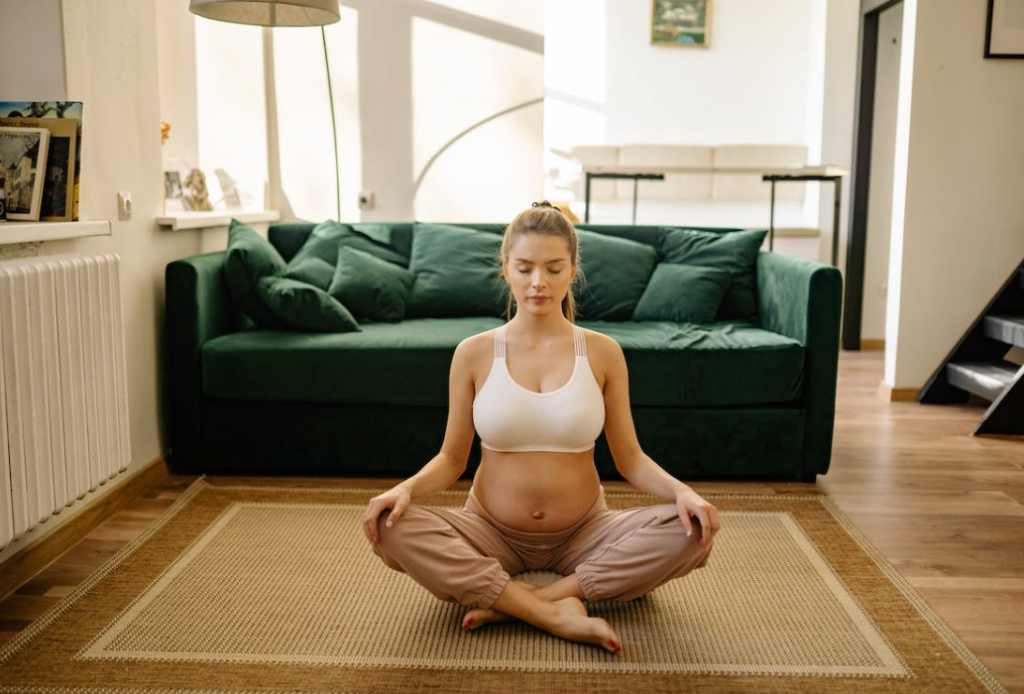Meditation Yoga For the Mind and Body
Learn how meditation helps the meditator fully embody the meditation practice through yoga.

Selfpause Affirmation App
Download the app to get 1,000’s of affirmation meditations and everything you need to write, record and listen to your own.
Meditation yoga focuses on the mind and body. This form of yoga helps the meditator to fully embody the meditation practice. As the body becomes stronger and more flexible, it supports the yogi’s meditation practice and becomes less distracting. The practice of mindfulness, the Buddhist version of meditation, helps the yogi awaken the mind.
Upward salute

The Upward Salute is a foundation pose in all standing yoga poses and flows. It helps the body achieve alignment and lengthens the side waist. It also strengthens the shoulders and arms. It helps the body move energy up the spine and imprints movement patterns for backbends and inversions. It also helps relieve backache and indigestion and is great for those with asthma.
The Upward Salute is a great way to lengthen the side body, stretch your arms and legs, and improve your posture. This stretch also helps your hamstrings and shoulders. It also encourages your body to relax. When performed properly, the Upward Salute lengthens the spine, arms, and fingers, while toning the organs in your chest. It also massages the pancreas and kidneys.
Mountain pose

The Mountain pose is one of the basic yoga poses. It improves posture and stability while encouraging a feeling of groundedness. It can also help develop self-confidence. Mountain poses can be performed without a yoga mat or previous experience. This practice can be practiced even while sitting down. However, if you have any medical conditions, you should seek medical advice before trying them.
Beginners should take their time with this pose because it can be difficult to maintain balance. To begin, you will need to close your eyes and breathe naturally, paying special attention to your feet. The feet move constantly as they balance your body, so it’s important to focus your attention on them and feel them.
Ujjayi breath
When practicing meditation yoga, the ujjayi breath is an important technique for deep relaxation. It should be long and fluid and should feel like rolling waves. The breath should be robust and expansive and should fill the entire lungs, making the ribs widen slightly as it expands out.
Ujjayi is also useful for stress management, as it reduces your metabolism and activates the parasympathetic nervous system, restoring energy. Long, slow, conscious breathing is a fantastic stress management tool. When you’re stressed, your body and mind need more oxygen. By practicing the Ujjayi, you’ll be able to relax, even during the hottest moments.
Focusing on a physical sensation

When practicing meditation yoga, focusing on a physical sensation can help you achieve deep relaxation. Begin by focusing on the sole of your right foot and the sensations that come with it. As you breathe in deeply, imagine the sensations arising in your toes. Continue this focus as you move through your body, focusing on the right and left sides. As you relax, you will feel your body become spacious and open.
When practicing meditation yoga, you might experience a physical sensation such as shaking or trembling. This sensation is a normal physiological reaction to the disruption of the body’s normal thought processes. Muscle tension patterns in our bodies are often governed by our endocrine responses, which regulate how we think. When meditation practices disrupt these patterns, the fascia (the sheath covering muscle) is often affected, resulting in shaking sensations.
Visualization techniques in yogic meditations

Visualization techniques in yogic meditations may be effective for relieving stress and improving mood. These techniques can be beneficial to people who have difficulty focusing, or who need to gain insight. A good visualization practice involves imagining yourself in a specific state of mind, such as calm and relaxed. It can also be helpful to visualize a specific color or emotion. To use visualization techniques, you need to relax and get comfortable in your meditation area.
To begin a visualization exercise, choose an object that is pleasant for you. It can be a person, place, or thing. The goal is to focus your attention on that image and not on negative thoughts. This helps you achieve focus and increase the flow of energy. Once you have mastered the technique, you can expand your visualization to include different aspects of yourself.
Effects on the brain and body
Meditation yoga is an ancient mind-body practice that combines physical postures with breathing exercises and meditative exercises to produce a holistic mind-body experience. Physical exercise has well-known health benefits, and meditation and breathing exercises add an active attentional component. Neuroscientists are now beginning to study the effects of meditation and breathing on the brain.
Researchers have used MRI to examine the brain structure of yoga practitioners. In particular, they have found that the brains of yoga practitioners show an increase in gray matter volume. This increase is associated with years of practice.
Our Top FAQ's
Meditation is a central practice in the tradition of yoga, and it is believed to have numerous benefits for both the mind and body. These benefits may include reduced stress and anxiety, improved focus and concentration, increased feelings of calm and relaxation, and enhanced overall well-being. In addition, meditation has been shown to have a number of physiological effects, including lower blood pressure, improved immune function, and reduced chronic pain.
There are many different techniques and practices that can be incorporated into a meditation and yoga routine to support mental and physical well-being. Some examples include:
-
Deep breathing: Taking slow, deep breaths can help to calm the mind and relax the body.
-
Body scans: This practice involves focusing on each part of the body in turn, starting at the toes and working up to the head, noticing any sensations or tension and releasing them.
-
Guided imagery: This involves using the imagination to visualize peaceful or calming scenes or situations, which can help to reduce stress and anxiety.
-
Mantra repetition: This practice involves silently repeating a word or phrase, such as “peace” or “calm,” which can help to focus the mind and quiet racing thoughts.
-
Loving-kindness meditation: This practice involves silently sending well wishes and kindness to oneself and others.
Incorporating meditation and yoga into a daily routine can be challenging at first, especially if you are new to the practices. However, there are a few things you can do to make it easier to establish a sustainable daily practice:
-
Start small: Begin with short meditation and yoga sessions, gradually increasing the duration as you become more comfortable.
-
Choose a convenient time: Choose a time of day that works best for you and make sure to set aside a dedicated space for your practice.
-
Find a support system: Consider finding a meditation or yoga group or teacher to support and motivate you in your practice.
-
Be consistent: Aim to practice at the same time each day to establish a routine.
There are many potential challenges or obstacles that someone might encounter when starting a meditation and yoga practice, including:
-
Difficulty finding time: It can be difficult to carve out time in a busy schedule for meditation and yoga. One solution is to try to incorporate small meditation and yoga breaks into your daily routine, such as taking a few deep breaths during a work break or practicing a few yoga poses before bed.
-
Difficulty sitting still: Some people may find it difficult to sit still for an extended period of time, especially if they are not used to it. In this case, it may be helpful to start with shorter meditation sessions and gradually increase the duration as you become more comfortable.
-
Difficulty quieting the mind: It is common for the mind to wander during meditation, especially for those who are new to the practice. It is important to remember that this is normal and to gently redirect your focus back to your breath or mantra when this happens.
-
Physical discomfort: If you are new to yoga, you may experience some physical discomfort as you build strength and flexibility.
Meditation and yoga can be practiced by individuals of all ages and physical abilities, although it is important to consult with a healthcare professional before starting any new exercise or meditation practice, especially if you have a pre-existing medical condition.
For individuals who are new to meditation and yoga, it is generally recommended to start with a beginner’s class or program that is tailored to your specific needs and abilities. In addition, it is important to listen to your body and modify poses or techniques as needed to avoid overstraining or causing injury.
It is also important to choose a yoga instructor or meditation teacher who is trained and experienced in working with people of all ages and abilities, as they will be able to provide guidance and modifications to ensure that you are practicing safely and comfortably.
If you are elderly or have mobility issues, it is especially important to consult with a healthcare professional and consider working with an instructor who is trained in working with older adults or individuals with special needs.
